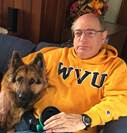Amateur Radio Then and Now
by AK3J and the Somerset County Amateur Radio Club
Unless you have a crazy uncle in the hobby, you may not know much about Amateur
Radio. Does it still exist? I earned my Technician license in November 1978. Then passed the Extra exam in January 1980. In early January I stopped smoking and by late January my first daughter was born. So, I have seen a lot of changes. There are now over 779,000 US Amateurs, with more than 24,600 in Pennsylvania. Worldwide there are over 2,900,000. So, lots of crazy uncles and aunts.
| 1970 | 2020 |
|---|---|
| New licenses: Novice, Technician, General, Advanced and Extra | New licenses: Technician, General, Extra |
| Testing performed by Federal Communications Commission (FCC) employees at a federal testing site | Testing by accredited Volunteer Examiners (VE Teams – other Amateurs) many options less than 50 miles from your home |
| Testing included a Morse code receiving test plus multiple-choice questions. Having Morse code skills was an international testing requirement. Radio waves do not know borders. | No Morse code receiving requirement for any license. Dropped by the FCC in 2005 and by other countries before and after that year. |
| Morse receiving test (at least 1 minute of perfect copy required during a 5-minute test) * Novice and Technician 5 words per minute * General and Advanced 13 wpm * Extra 20 wpm Receiving tests only needed to be passed once If you passed the Technician written test and the 5 wpm Morse test you did not need to take the Novice exam. Passing both the General and Advanced written exams was required before taking the Extra written exam. My step-son still has a Novice license. | Technician – 35 questions (26 correct to pass) 611.675 MHZ of operating frequencies mostly line-of-site frequencies plus .675 MHZ of HF frequencies has incredible flexibility including television General – 35 questions (26 correct to pass) 2.69155 MHZ more HF frequencies. Desirable long-distance capabilities Extra – 50 questions (37 correct to pass) only .5 MHZ more HF frequencies; but, bragging rights for the top license |
| Study publications are available without the text of actual questions on the exams | Study publications including the text of all possible exam questions and answers plus online practice exams |
| Equipment – Mostly vacuum tubes in large “boxes” powered by 110-volt AC No home computers No internet | Equipment – Mostly solid-state in small “boxes” powered by 12-volt DC Home computers for learning, logging and operating |
| Best long-distance mode: Morse code – the more output power the better, you just need a transceiver and a keying device (like an on/off switch; but, more expensive) | Best long-distance mode: Multiple “digital modes” like FT8 using 20 watts or less for 1,000 miles plus exchanges |
| Cost – Multiple “boxes” required for HF and above multiple US-made options including kits by Heathkit | Cost – Possible HF, VHF, and UHF “all modes” in a small “box” with no significant US-made options. New equipment is never cheaper for capabilities supported |
| Some things stay the same: – Federal license required – No age restrictions – To transmit, you will need multiple antennas – the bigger and higher the better – We are Amateurs because we cannot accept payment for using our on-air privileges. – We buy and maintain our equipment. | Of course, for worldwide communications “There is an App for that.” Proof of a Technician license is required to install each app. Echolink – FM voice computer to computer with radio linking or using a smartphone APRSDroid – Digital position reporting with text messaging and radio linking DroidStar – Digital voice modes using a smartphone and/or computer with radio linking |
Why does Amateur Radio exist? The purpose is stated in the FCC regulations.
(a) Recognition and enhancement of the value of the amateur radio service to the public as a voluntary noncommercial communication service, particularly with respect to providing emergency communications
(b) Continuation and extension of the amateur’s proven ability to contribute to the advancement of the radio art
(c) Encouragement and improvement of the communications and technical phases of
the art
(d) Expansion of the existing reservoir within the amateur radio service of trained operators, technicians, and electronics experts
(e) Continuation and extension of the amateur’s unique ability to enhance international goodwill
Club members meet Thursday evenings in Room 27 of Founders Hall, about 2 miles east of Somerset, 6022 Glades Pike, Route 31 east. Anyone interested in Amateur Radio is invited to attend. We now have a basic station set up for demonstrations. The room is used for meetings, VE test sessions, and training. The club maintains two analog FM-linked voice repeaters on 147.195 MHz and 443.250 MHZ. In addition, we support two multi-mode digital repeaters on 443.725 at Mt. Davis and 441.5 MHz at Hays Mill.
We are lucky in Somerset county. Big emergencies are rare. Club members assisted with communications during the Johnstown flood in 1977 and the Glencoe flood in 1984.
We practice with a weekly net every Sunday evening at 7:30 on the 147.195 repeaters, Field Day, other events like the Mt Davis Challenge, and the Stoystown Tractor Show. Club members assisted with the set-up of a basic Amateur station in the Somerset EMA office.
You will find current information about club activities at www.k3smt.org. We encourage you to learn more.
